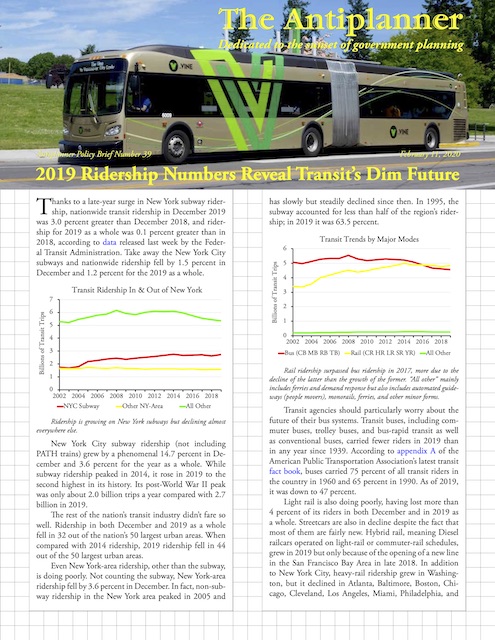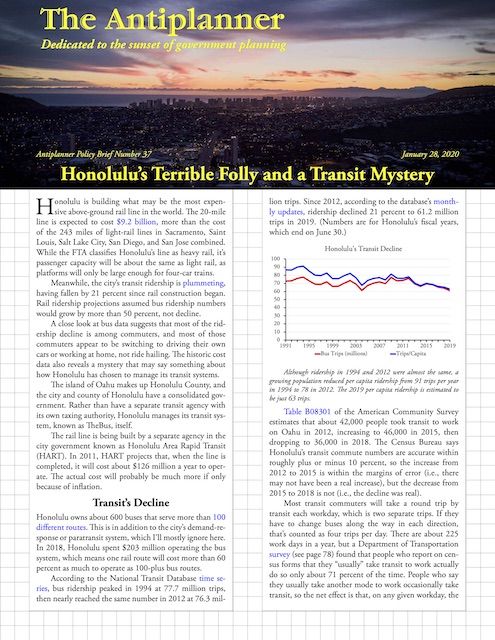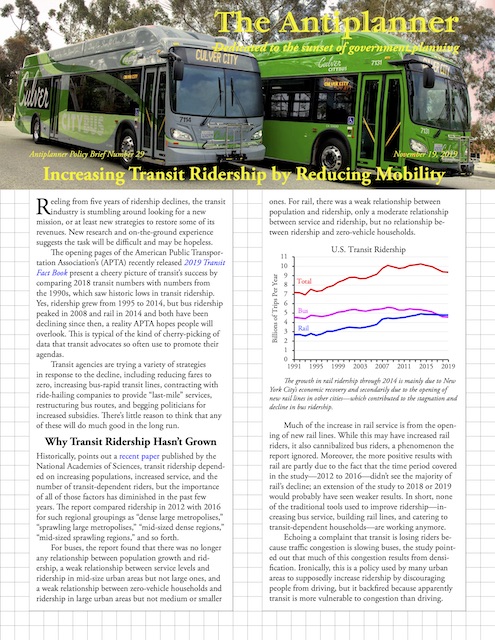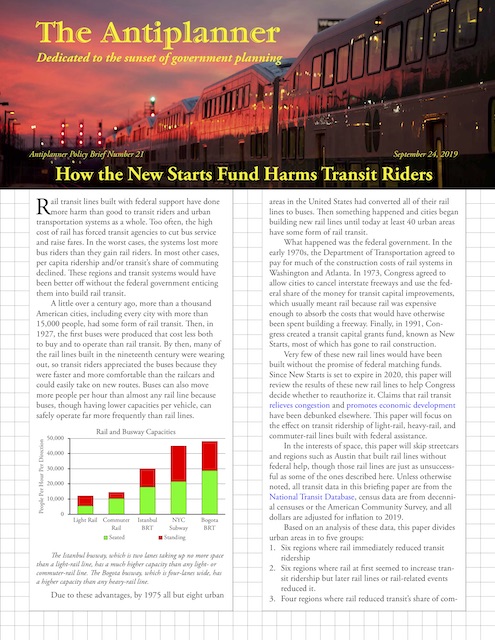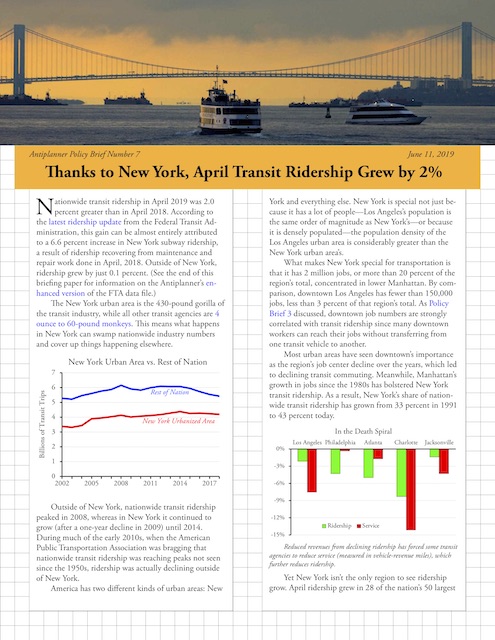The nation’s transit systems carried 81 percent fewer riders in May, 2020 than in May, 2019, according to data posted yesterday by the Federal Transit Administration. This drop is almost as great as the 84 percent decline reported for April.
Rail was hardest hit, with an 89 percent fall in ridership, while buses lost 74 percent of riders. For the year to date, nationwide ridership is down 41 percent, with rail losing 44 percent and bus 38 percent.
The biggest declines were in urban areas that see the most transit ridership: New York lost 90 percent of its riders, Washington 89 percent, Philadelphia 88 percent, and Boston and San Francisco-Oakland 85 percent. Falldowns were smallest in urban areas such as San Antonio (-45%) and Las Vegas (-54%) where transit plays a relatively insignificant role in the region’s transportation. Continue reading

